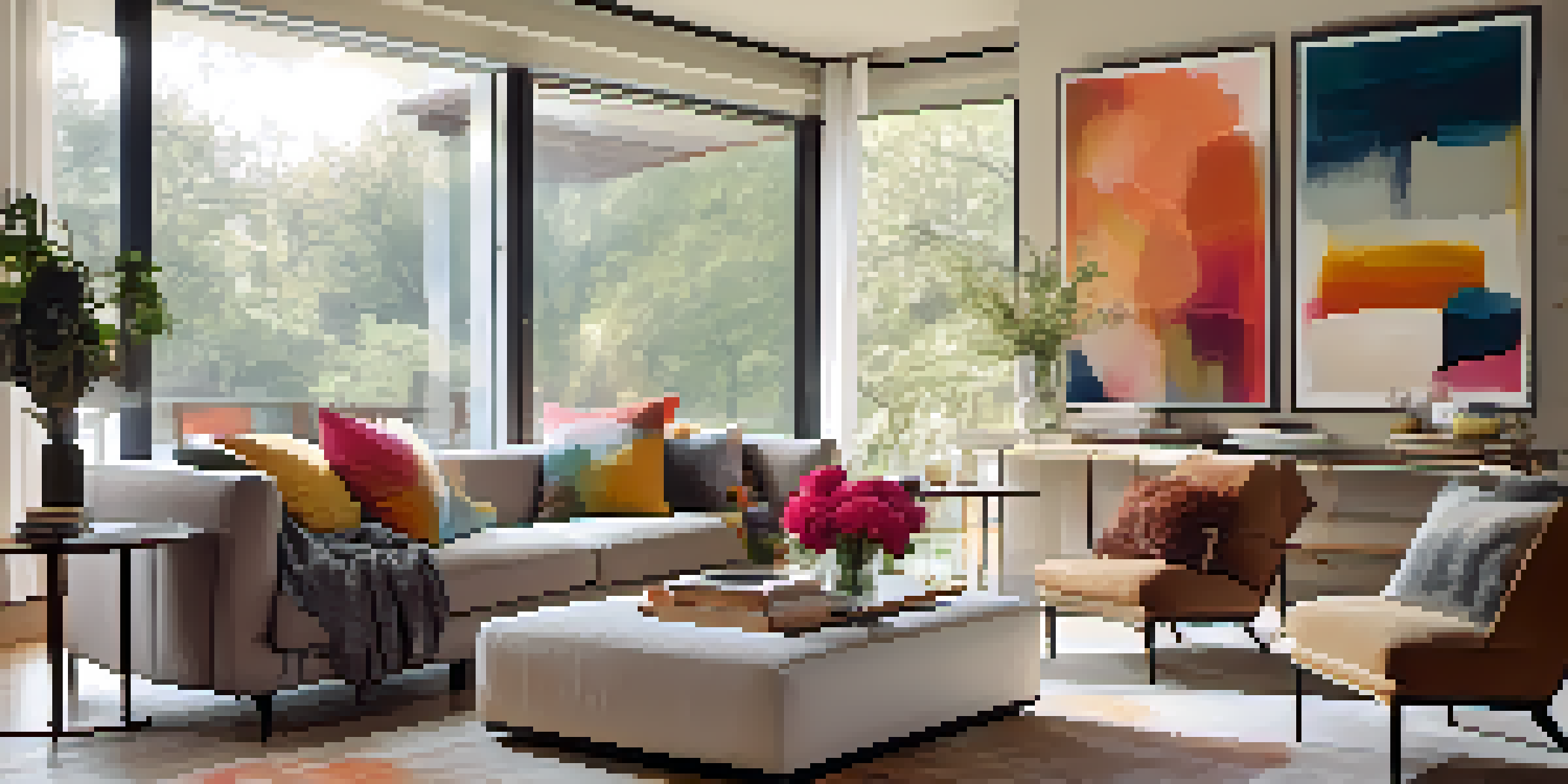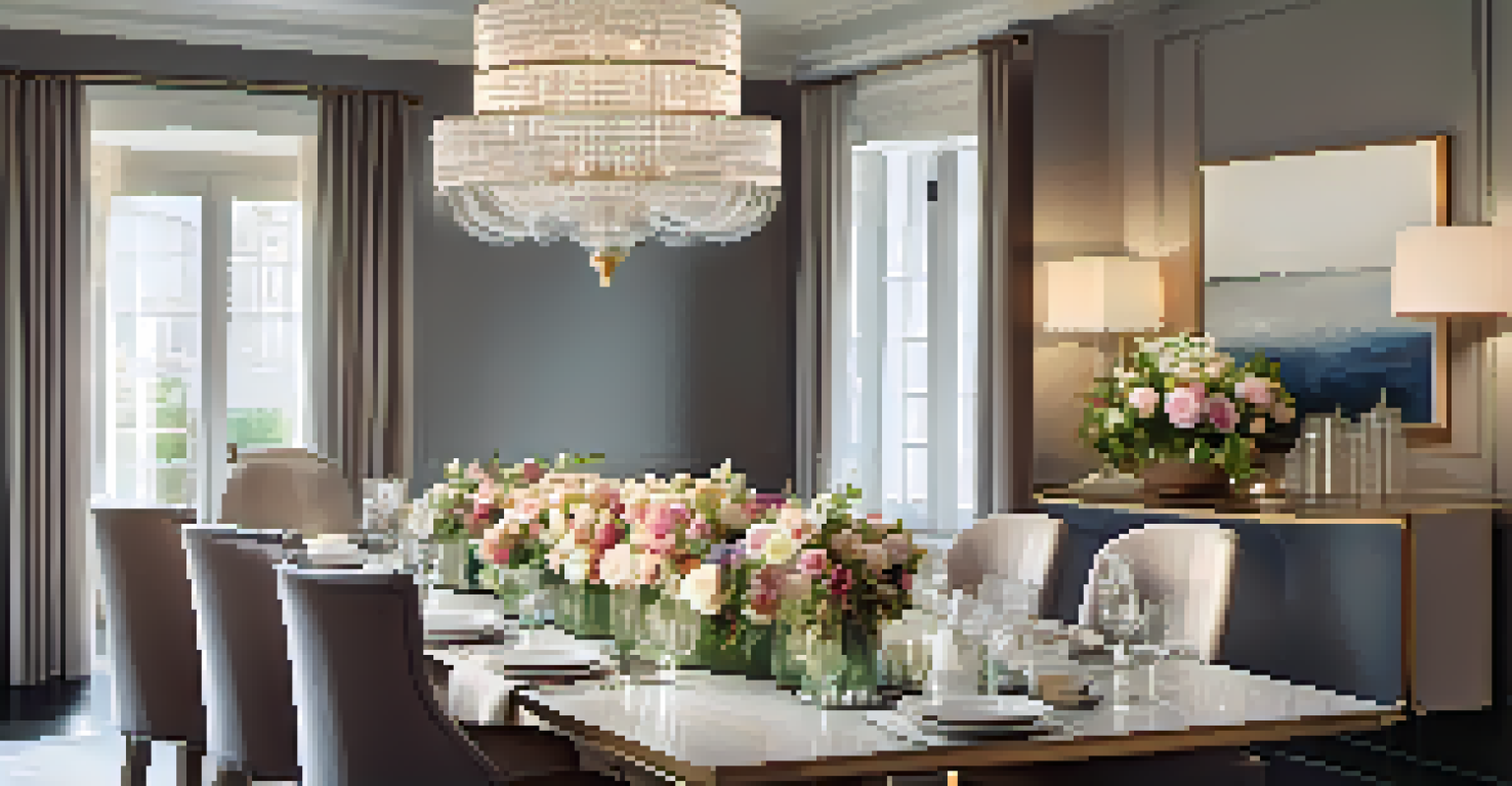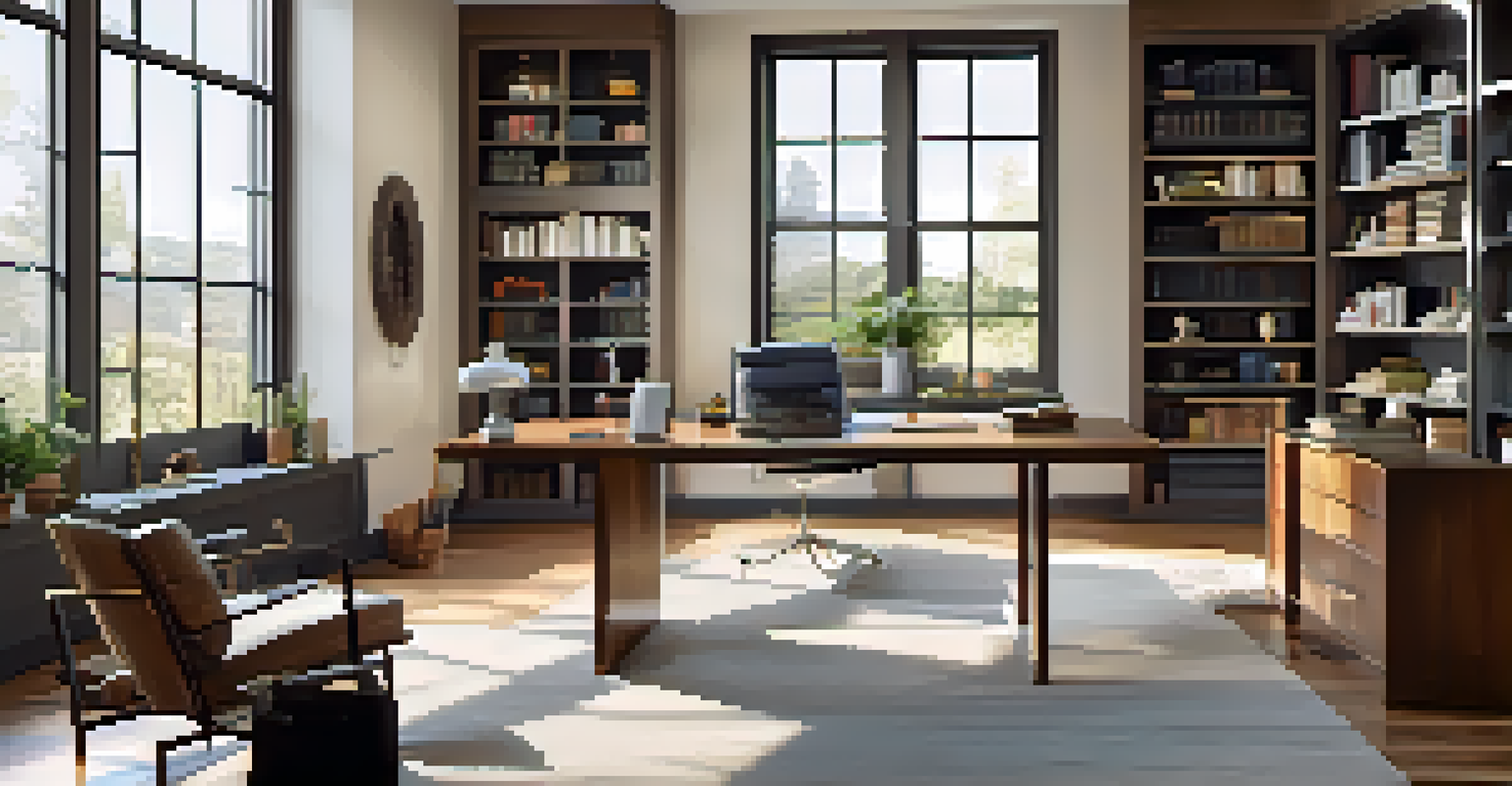The Importance of Balance in Timeless Interior Design

Understanding Balance in Interior Design
Balance in interior design refers to the distribution of visual weight within a space. Just like a well-balanced meal offers a variety of flavors, a well-balanced room combines different elements to create harmony. This can involve balancing colors, textures, and furnishings to achieve a cohesive look that feels inviting.
The details are not the details. They make the design.
Imagine walking into a room where everything is pushed to one side; it feels off, doesn’t it? On the other hand, a space that thoughtfully arranges furniture and decor creates a sense of peace. Achieving balance is not about symmetry—it's more about proportionality and ensuring that all elements work together seamlessly.
In timeless design, balance is key to creating spaces that feel both comfortable and aesthetically pleasing. It’s about crafting an environment where your eyes can rest, allowing for relaxation and enjoyment, much like a well-composed piece of music.
Types of Balance: Symmetrical vs. Asymmetrical
There are primarily two types of balance: symmetrical and asymmetrical. Symmetrical balance is like a mirror image; for instance, two identical lamps flanking a sofa create a sense of order. It’s often associated with traditional styles, providing a classic and formal look that many people find appealing.

On the other hand, asymmetrical balance achieves harmony through variety. Think of a large abstract painting above a small side table and a sculptural floor lamp on the opposite side. This creates visual interest without feeling chaotic, making it a popular choice in modern and eclectic interiors.
Balance Creates Visual Harmony
Achieving balance in interior design involves the thoughtful arrangement of colors, textures, and furnishings to create a cohesive and inviting space.
Both types of balance serve unique purposes, and the choice often depends on the atmosphere you want to create. By understanding these two approaches, you can mix and match to design spaces that are not only beautiful but also uniquely yours.
The Role of Color in Achieving Balance
Color plays a pivotal role in creating balance within a space. Just as a painter carefully selects colors to evoke emotions, interior designers use color to direct the eye and establish harmony. For instance, pairing a bold accent wall with softer furnishings can create a beautiful contrast without overwhelming the senses.
Design is not just what it looks like and feels like. Design is how it works.
Using a balanced color palette can significantly affect how a room feels. Too many bright colors can create chaos, while a monochromatic scheme may feel dull. Instead, consider using a mix of neutral tones with pops of color to achieve that perfect equilibrium, much like seasoning in cooking enhances flavor without overpowering the dish.
In timeless design, color balance is about enhancing the overall atmosphere. By strategically choosing colors that complement rather than clash, you create a space that feels well-thought-out and inviting.
Texture: The Unsung Hero of Balance
Texture adds depth and interest to a room, playing a crucial role in achieving balance. Think of a cozy living room that combines soft fabrics, like plush cushions, with the sleekness of a glass coffee table. This mix creates a dynamic space that feels both warm and sophisticated.
Incorporating various textures can also help break up visual monotony. A room with only smooth surfaces may feel sterile, while a combination of wood, metal, and fabric invites the eye to explore. It’s like layering a cake with different flavors; each layer adds to the overall taste experience.
Color and Texture Enhance Balance
Using a balanced color palette and incorporating various textures can significantly elevate the atmosphere of a room, making it feel more engaging and comfortable.
Balancing texture is essential in timeless design, as it creates a tactile experience that engages all the senses. By thoughtfully combining textures, you can make your space feel more inviting and layered, encouraging people to linger a little longer.
Scale and Proportion: Finding the Right Fit
Scale and proportion are fundamental to achieving balance in interior design. Imagine placing an oversized couch in a tiny room; it would feel cramped and overwhelming. Conversely, a small chair in a large space can seem lost. Finding the right size for each piece is crucial to creating harmony in your design.
Proportion refers to the size relationship between different elements within a space. For example, pairing a tall bookshelf with a low-profile sofa creates a pleasing contrast that draws the eye upward, while also maintaining balance. It’s akin to a well-styled outfit, where every piece complements the others beautifully.
In timeless design, the right scale and proportion lead to a sense of cohesion. By being mindful of the sizes of your furniture and decor, you can create spaces that not only look good but also feel right.
Lighting: The Key to Balanced Ambiance
Lighting is often the unsung hero of interior design, playing a crucial role in achieving balance. The right lighting can transform a space, highlighting key features while providing the necessary illumination for functionality. Think of it as the seasoning in your favorite dish; the right amount can elevate the entire experience.
Layering different types of lighting—ambient, task, and accent—creates a balanced atmosphere. For instance, a combination of ceiling lights, floor lamps, and wall sconces ensures that every corner of the room is well-lit, adding warmth and inviting comfort. It’s like creating a mood for a gathering; the right lighting sets the tone for every occasion.
Personal Touches Reflect Individuality
Incorporating personal items into your design while maintaining balance allows your space to reflect your unique personality and tell your story.
In timeless design, lighting should not just serve a purpose, but also enhance the beauty of the space. By thoughtfully incorporating multiple light sources, you create a balanced ambiance that feels both functional and inviting.
Personal Touches: Balancing Style with Individuality
While balance is essential in interior design, incorporating personal touches is equally important. Your home should reflect your personality and style, much like how a signature dish reflects a chef’s unique taste. This balance between design principles and individual expression is what makes a space truly feel like home.
Incorporating personal items, such as family photos, travel souvenirs, or handmade crafts, adds character to your space. The key is to arrange these elements thoughtfully to maintain balance without clutter. It’s like curating an art gallery; each piece should complement the others while telling your unique story.

Timeless design embraces individuality while adhering to balance. By finding that sweet spot between personal expression and design principles, you create a space that feels authentically you, inviting others to connect with your story.